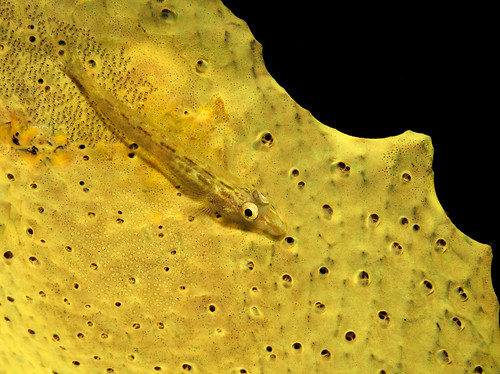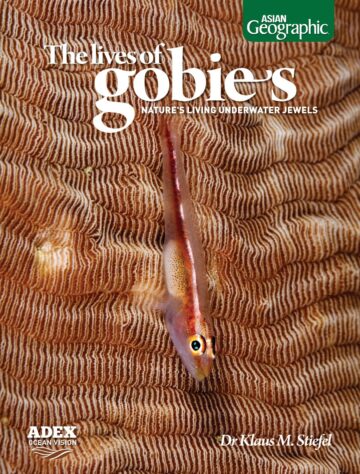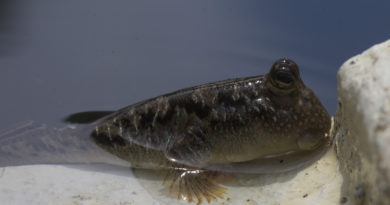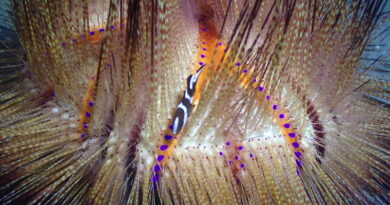Elephant Ear Sponge Goby
A goby which I enjoy observing and photographing quite a lot is Pleurosicya elongata (described by Helen Larson in 1990), called the cling goby on Fishbase, but commonly also called the elephant ear sponge goby, since it lives its whole post-larval (adult) life on one particular kind of sponge, the elephant ear sponge.
Fishes of Australia also has a section on this goby, featuring an image of mine.
I recently observed a few of these very small fish during a dive in Siaton (in the south of Negros Island in the Philippines, where I live), during a dive with two friends. I excitedly pointed at the sponge with a few of the gobies, and while one of them, an expert fish biologist, realized what kind of fish likely lives on the sponge, my other friend, who is not a professional biologist, just shrugged and laughingly told me after the dive that he wasn’t quite sure what I had tried to point out. These fish are indeed small, very well camouflaged on their host sponge, and very fast moving. Once you come too close, they often dart to the other side of the sponge.
This is the fish which my friend barely saw:
Here is another shot from Mactan:
Humans are very visual animals, with large forward facing eyes, allowing binocular vision (two images of the same object, from two eyes processed in the brain at the same time), with large visual brain centers. Still, it’s hard for us to make out these small fish. For a predatory fish like a medium-sized wrasse with much smaller eyes and much less visual brain processing power this will be so much harder, even if the fish is specialized in finding prey fish. The camouflage of the goby is not some add-on gimmick to its other survival skills, but crucial to its survival.
The Sponge Host
The sponge these gobies live on is Ianthella basta, the as elephant ear sponge. A few interesting facts are known about this sponge. It lives in a symbiosis with a sea cucumber. Hammond & Wilkinson showed by using radioactively labeled nutrients that “the holothuroid gains nutritional advantage from the association by ingesting and assimilating exudates of the sponge”. The sponge feeds the cucumber in some way. It’s not clear if there is a reciprocal gain for the sponge in the relationship. An image of this sea cucumber on the sponge is shown below. With all these intricate interactions between animals which live in close proximity, it would not surprise me if there was more to the sponge-goby symbiosis than the goby simply perching on the sponge.
The paper I mentioned is here:
Check out my new book on The Lives of Gobies:





